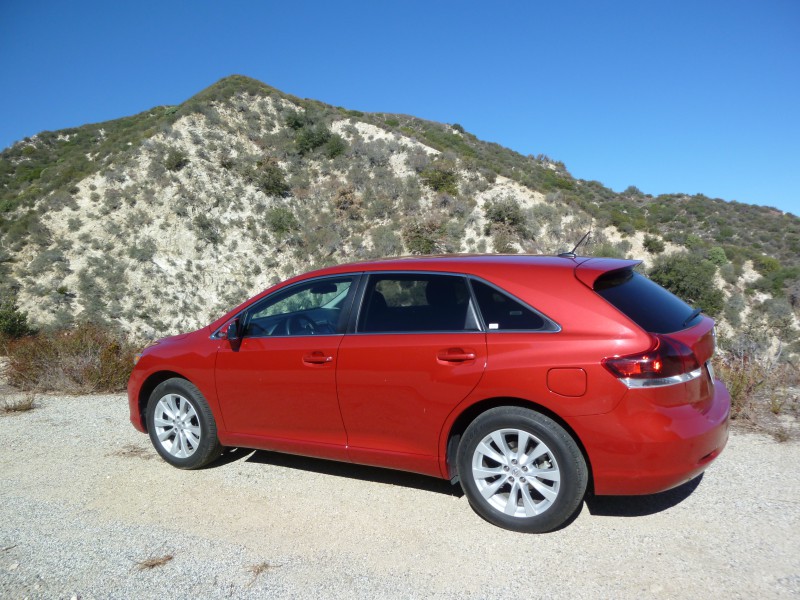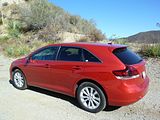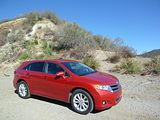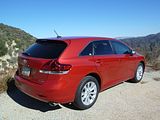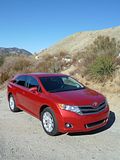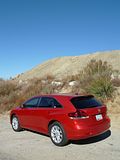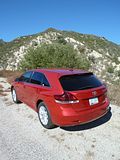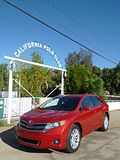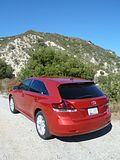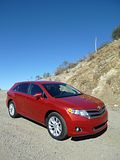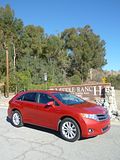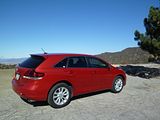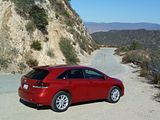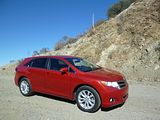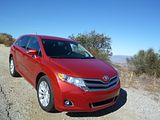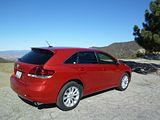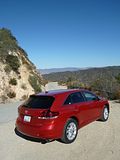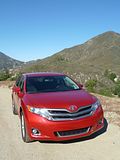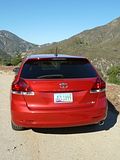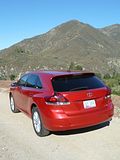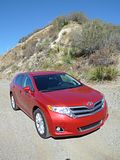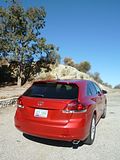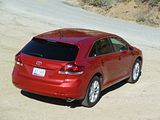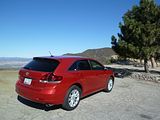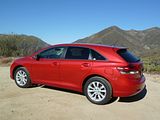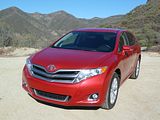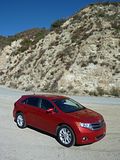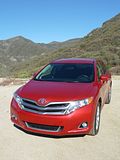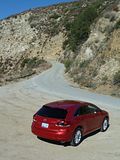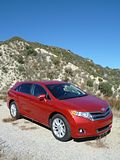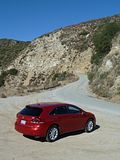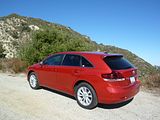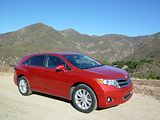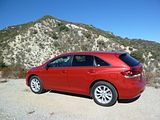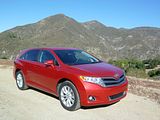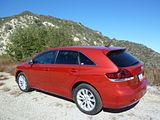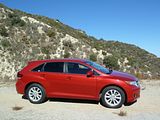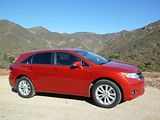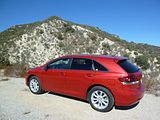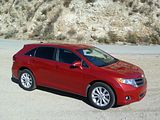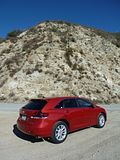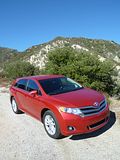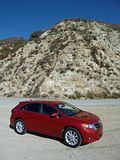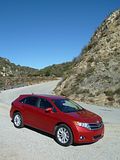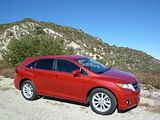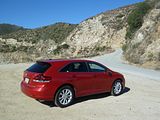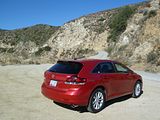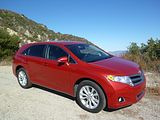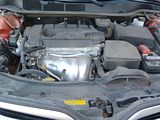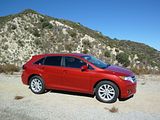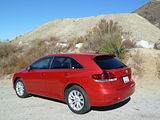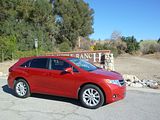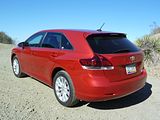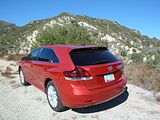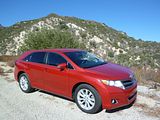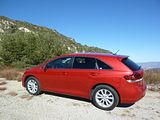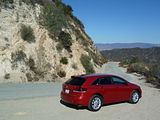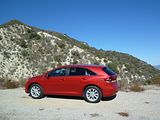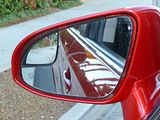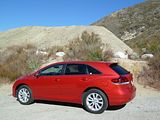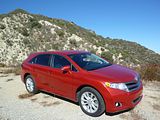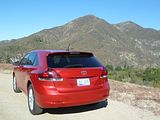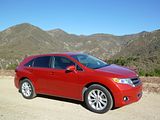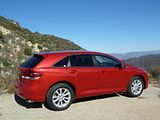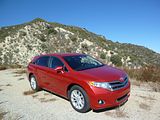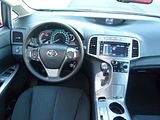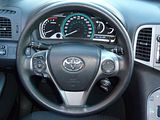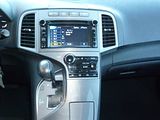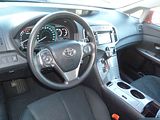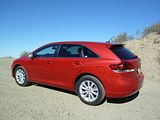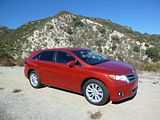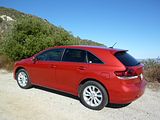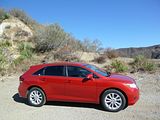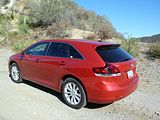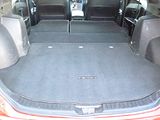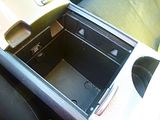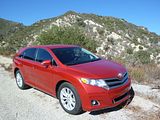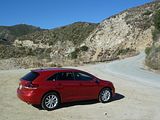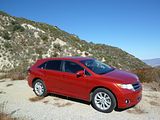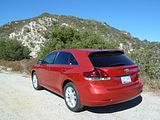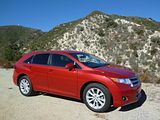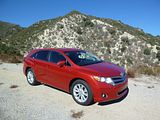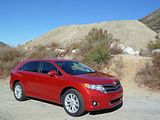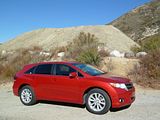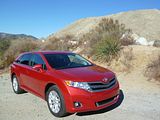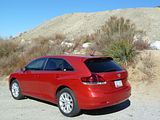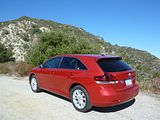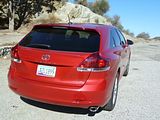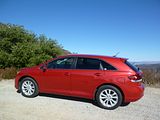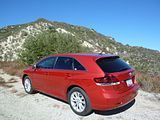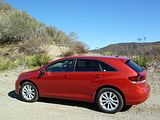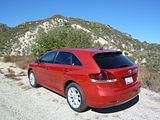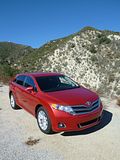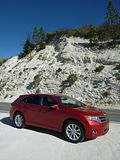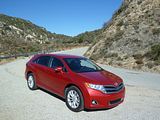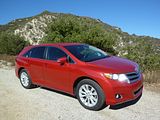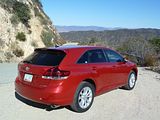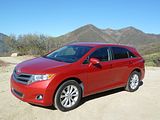It used to be easy to categorise cars, and thus to produce a list of rivals. Core of most volume manufacturers’ ranges were either Saloon or Hatchback cars, and if they offered other bodystyles, then they tend to be an Estate, perhaps a Coupe and occasionally a Convertible. When Toyota launched a new upper-medium sized car in 1983, which took the name Camry, they conformed to this norm. In its first generation, Camry was a regular four door Saloon, and some markets saw a 5 door Hatchback model. The second generation eschewed the Hatch in favour of a proper Estate car. Come the third generation and a Coupe was added to the range, giving the buyer a choice of three body styles. By 1996, the date of the launch of the fourth generation model, though and interest in the vital US market, in the traditional Estate model was waning, and Toyota decided not to offer one, and nor did it appear in Europe, though the Australians did receive what was quite an elegant such design. The Coupe morphed into a model of its own initially called Camry Solara, but soon dropping the prefix, and evolving in its own direction, leaving Camry just as a Saloon car as it entered the twentyfirst century. Those who wanted a more spacious and versatile vehicle seemed all to be attracted by the growing number of SUV-based machines, though this extra practicality came at a price, as these machines tended not just to be more expensive to buy and far thirstier, but with their truck-based origins, few drove anything like as nicely as the regular cars that people were used to. Enter the Crossover, an attempt to find the best of both worlds, with the extra space, ride height and versatility of the SUV, but more civilised driving dynamics inherent in their integral designs. A rush of models were added to just about every manufacturers’ ranges, in many cases adding to a portfolio already well stocked with SUVs. So, it was perhaps no surprise that even though Toyota had an SUV portfolio which encompassed the once sporty RAV4 and the larger Highlander, a concept Crossover model, the Toyota FT-SX concept, was unveiled at the 2005 North American International Auto Show. A production version, bearing the name Venza was launched three years later at the 2008 North American International Auto Show in Detroit. Based on Toyota’s K platform, this car, primarily engineered at Toyota’s Technical Center in Ann Arbor, Michigan, and designed at the Calty Design studios in Newport Beach, California, looked more like a sort of new generation Camry Estate than a full-blown CUV, a market segment whose size or even very existence was unclear. Venza slotted in size and price between the RAV4 compact crossover SUV, and the Highlander mid-size crossover SUV that has third-row seating, though it was actually an inch longer than the then current Highlander and for the 2009-2010 model years, its first couple on the market, the base Venza’s MSRP was $1000 higher than the base Highlander. Since that time, sales have been modest, even though the Venza has continued to evolve, with additional trim options added to join the choice of 4 or V6 cylinder engines and Front or All Wheel Drive. A visual freshening came in 2013, but the Venza you can buy now is very similar to the one that you could purchase in early 2009. Perhaps because of its unusual market positioning, there are very few of them in the rental fleets, so although it’s been on my list of cars to try for years, it was only when the attempt to renew the Subaru Outback failed that I saw this one, a 2013 model All Wheel Drive LE version parked up. Despite its Arizona plates, there were no issues in getting it allocated to me, to find out, over a couple of days, what I thought.
As I drove off, it occurred to me that the Subaru Outback I had just handed back was probably the closest rival of all, as that car is also nearer in size to a regular Estate model than the taller SUV type machines that are in the same rental car group as this Venza. First impressions were that this does not feel like a Camry Estate. Now, if you’ve driven a Camry, before you get too excited that this car might be less antiseptic in the driving experience, don’t get your hopes up high. You are most definitely not going to select this car because it is good to drive, because, let’s be honest, it is not. It’s not actively bad, either, but it certainly will not get the enthusiastic driver in the slightest bit excited, and even someone who does not put themselves in that category may well come to rue their choice. The first problem is the engine. The test car had the standard 2.7 litre 4 cylinder unit, which generates 181 bhp, which frankly is not really man enough to power such a large and heavy car. To get even modest acceleration out of it, you will have to work it hard, and that makes it noisy. Whilst steady speed cruising is decently civilised, acceleration is far less restful, and my notes repeatedly refer to the noise that is generated. If you drive it hard, you can keep up with the flow of traffic, and I even managed to do a reasonable job – in places – at not losing sight of my friend Mr Six Speed Blog when we had a day in the canyons, where he had a Porsche Boxster. But he could tell from his rear view mirror just how hard I was having to work the Venza, and I still lost him numerous times. This all had an effect on the fuel consumption, too. I covered 353 miles in the two days that I had the Venza, and following the rate at which the fuel gauge had indicated a disappearance of fuel on Day 1, took the precaution of adding some more before heading up into the canyons where fuel stations are non-existent. The trip computer suggested an average of 20.0 mpg, which was clearly taking into account what previous renters had achieved, as after I returned the car and did the sums, the consumption during my tenure turned out to be just 21.7 mpg US or 25.92 mpg Imperial. Given that the regular Camry is particularly parsimonious, these figures have to be rated as plain disappointing. Official figures suggest that the V6 model’s consumption should be barely any greater, so I suspect that the combination of weight of the body and the AWD system as well as the spirited driving for part of the test distance really do take their toll.
I have got used to the fact that most Toyota models seem to come with steering which is so over assisted that it is positively vague and devoid of feel, so it was quite nice to discover that the Venza was not quite so badly afflicted. “Not quite so badly” is the correct phrase, though, as there is still not a lot of feel, and the steering is still too light, but it is not as bad as the last Corolla or the Camry. Press on a bit on twisty roads, and you will discover that whilst grip levels are quite reassuringly good, there is a lot of body roll and lean. This is definitely a car that is made for straight and flat roads, like Freeways, as when I took the Venza down to Irvine, for Cars and Coffee, it was far more in its element. Here the low noise levels when cruising and the compliant ride from the soft suspension meant that progress was far more serene and none of the problems outlined above came to the fore. There were no issues with the brakes, which, of course, got a certain amount of testing up in the mountains as well. There is a foot operated parking brake. Visibility was generally good, and was helped by a blind spot mirror in the upper left of the driver’s door mirrors. With the hatch-like rear of the car, judging where it ended was easy, though there were parking sensors and a backup camera to help out in case there were any doubt.
The interior did not impress much at first glance, either, largely thanks to the fact that is dominated by a lot of faux carbon fibre trim which lines the central part of the dash/console as well as being inlayed on the door casings and other parts of the dashboard. It is particularly naff looking and completely inappropriate in a car with zero sporting pretensions, though I suppose it does at least provide some colour and texture contrast in what would otherwise be a fairly drab dark grey interior, which has the same grained texture of the main dash moulding as I encountered in the Yaris I had driven a few days earlier. It’s not the only awkward part of the design, as there is a rather large and unsightly pod on the left spoke of the steering wheel which is used as audio unit repeaters. That aside, the rest is easy enough to use. A single cowl covers all the instruments. These are dominated by a large central speedometer, with interlocking arc gauges to either side for the rev counter and fuel level. The dials glow a rather pleasant shade of turquoise, and they are at least easy to read. The centre of the dash contains a rather basic audio unit that you will also find in other low end Toyota models. The centre of the dash then slopes down at 45 degrees or so, with the gearlever on one side and a half width series of knobs and buttons for the climate control. The display for the climate settings are partly presented in the audio unit and partly in a digital line up across the top of the dash. Twin column stalks operate the indicators and lights on the left of the column and the wipers on the right.
The driver’s seat was electrically adjusted, including the lumbar support, and once set for my preferred posture, it proved comfortable. The steering wheel had a tilt and a telescope function, so getting a good driving position was not hard. It is when you open the rear doors that you really notice the extra space that you get by virtue of this being part-way to an SUV rather than just a regular estate car. There is lots of space here. Leg room is in very plentiful supply and there is far more headroom than you would normally get in an Estate. The rear seats can be partially reclined, so you can adopt a more relaxed posture if you want. Width is such that there would not be any issue in putting three burly sized occupants in the back of the car, either. The capacious passenger compartment is the one area where the Venza clearly beats the Subaru Outback. There is a drop down central armrest for added comfort. Even with the rear seats up, there is plenty of boot space. There is a roll-back cover, but with it in situ, there is a decent load area underneath it. Roll it back, or remove it, and there is a vast area which can be made even bigger by dropping the asymmetrically split rear seat backs onto the seat cushions, creating a floor which is not quite flat. There are lots of places for odds and ends in the passenger cabin. There are door bins on all four doors, and there is a huge glove box. A bi-level cubby under the central armrest is complemented by another smaller one above the driver’s left knee and then a huge one under the central cup holders which you access by sliding the entire moulding back. There are map pockets in the back of the rear seats.
Venza is offered in three trim levels: LE, XLE and Limited. Further choices are either a 4 cylinder (available on the LE and XLE) or the 3.5 litre V6 (XLE and Limited). The test car was the cheapest of the trims, but did sport the optional AWD. Standard equipment includes 19″ alloy wheels, fog lights, cruise control, an anti-theft system, an Auxiliary Power outlet, automatic headlights, a rear parcel shelf, a universal garage opener, remote central locking, heated mirrors with a blind spot feature, dual zone climate control, an AM/FM audio unit with CD, MP3, Bluetooth and AUX, a power operated driver’s seat. XLE trim adds rear privacy glass, an alarm, a backup camera, keyless start, a power operated tailgate, a leather wrapped steering wheel, a remote boot release, a mirror memory, leather seats, power operation for the passenger seat, a seat memory and the carbon fibre trim is replaced by a wood effect. Upgrade to a Touring and you also get a power operated tilt/slide glass sun roof, a Premium sound system with a JBL Stereo unit with 13 speakers, XM Satellite Radio and HD radio as well as heated seats.
The enthusiast reading this, assuming they actually got as far as this, will conclude that the Venza is not for them. And indeed, in my opinion, it is not. This is not a car that you will enjoy driving: it needs to be worked hard, it is noisy and it is thirsty, and it rolls a lot on the corners. However, if you are looking for a roomy and practical car that has plenty of space for people and luggage without going the full way to an SUV, then the Venza may be worthy of consideration. If you are looking for alternatives, you may be thinking about vehicles like the Ford Edge or Nissan Murano, both of which are in the process of being replaced, and then there is the Subaru Outback, which is probably the closest alternative. There is a bit more space in the Toyota, but in all other respects, the Subaru has the Venza licked in every aspect. It would seem that the US market agrees, as just over 27,000 Venza have been sold YTD in 2014, whereas over 144,000 Outbacks have found homes. This is one Toyota that is rare not just in the rental fleets, but on the road as a whole, and having driven it, I can see why. Perhaps that niche of straddling the conventional Estate and the full-on SUV is too difficult to get right, after all.

